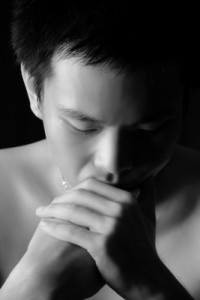 Today our guest blogger is Salomon Ptasevich.
Today our guest blogger is Salomon Ptasevich.
Anxiety and depression are two complex emotional disorders, which also involve thinking and behavior problems. Though different, they have some similarities that can cause confusion when trying to distinguish. We turn first to see that they are different, then see their commonalities and ending with a brief reflection on the subject.
Differential Aspects
Anxiety is a warning system that is activated in anticipation of future danger or threat. In response it is intense; it’s easy to be associated with different stimuli or situations. It generates a marked activation of the body that serves to be launched as the escape behaviors, avoidance or struggle with the elements of threatening. It is also common for the physiological activity as it may be manifested at the psychological level, resulting in a greater number of distractions, hyper vigilance, apprehension, irritability as well as insecurity. The thoughts and assessments relate to the threat, the overvaluation of risk and own resources, etc. Anxiety, therefore, focuses on prevention for the future for certain that there are no unpleasant consequences that are presupposed by the individual.
Also in anxiety disorders there is another set of characteristics that distinguish them from depression. No variation throughout the day (except in some cases with strong anticipatory components, they often feel worse upon awakening and early morning hours), or in different seasons is experienced. Furthermore, the anxiety does not imply the loss of the ability to obtain pleasure and enjoyment, as is the case with depression.
The mood is an emotion related to the system of conservation / energy regulation and motivation. The depressed mood, or depression, is activated to past events involving loss, degradation or failure, producing quiet, or slowing the decline movements, and a deep sadness. If the time to heal up from the condition is excessive, it is recommended that you receive social support that mitigates potential losses, recharge energy, and facilitate the resolution of problems. However, a person suffering from these disorders may persistently experience conflicts that remain unresolved, occurring social isolation, loss of the meaning of life, greater leeway and the belief that there is no solution to the problems. The care and thought are usually geared to losses, failures or degradations imagined or real, that generate deep sadness, inappropriate guilt, decreased self-esteem and, in some cases, suicidal ideation.
Summary of the Defining Characteristics of Anxiety
- Anxiety attacks
- Fear
- Feeling helpless
- Nervousness
- Panic
- Unexplained anxiety
- Constant worry and whine
Summary of the Defining Characteristics of Depression
- System-conservation / energy regulation
- Thoughts of failure, loss or degradation
- Decreased physical and social activity (withdrawal and slowing of movements)
- Sadness or difficulty in feeling pleasure
- Loss of sense of existence
- Inappropriate guilt
- Low self-esteem and feelings of inferiority
If both occur in the same patient, it is important to clarify what were the primary as well as the secondary reason of such a condition. However, the criteria that will determine what will be tried first will cause discomfort to the patient and a great degree of disability. In case this is not clear, it is advisable to first deal with depression because it directly affects the motivation, and therefore, monitoring of treatment, or any other program or initiative recommended for recovery.
Image courtesy of poppad / FreeDigitalPhotos.net